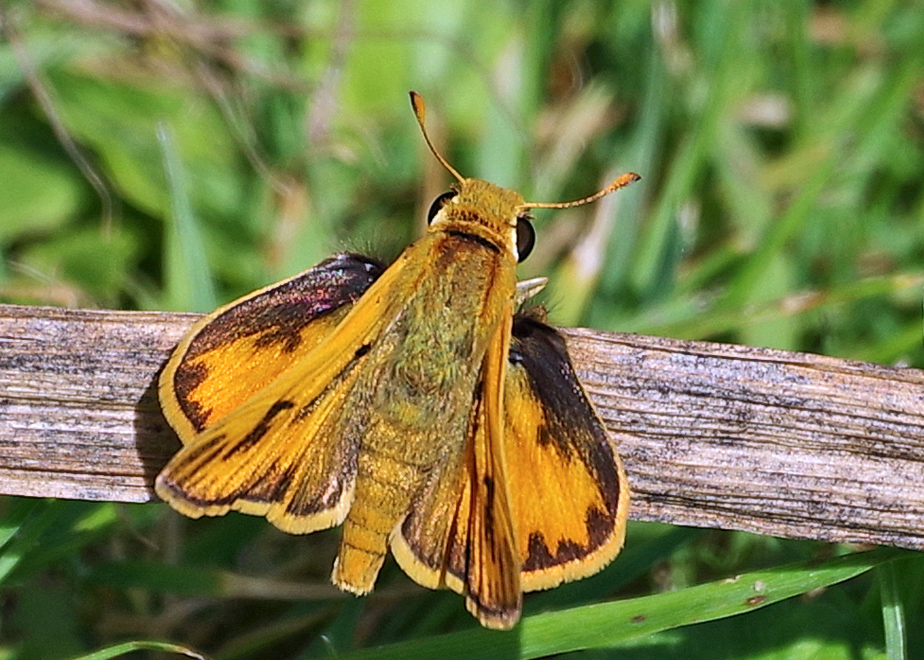
by Kate Redmond
The End of Summer
Howdy, BugFans,
We’ve arrived at the final act in this summer’s insect drama – a drama played out over the months by an ever-changing cast of characters. Some are regulars, with successive generations appearing in multiple acts throughout the season, while others step in for only one act of the play. Here are some of the actors that appeared on stage after mid-August.
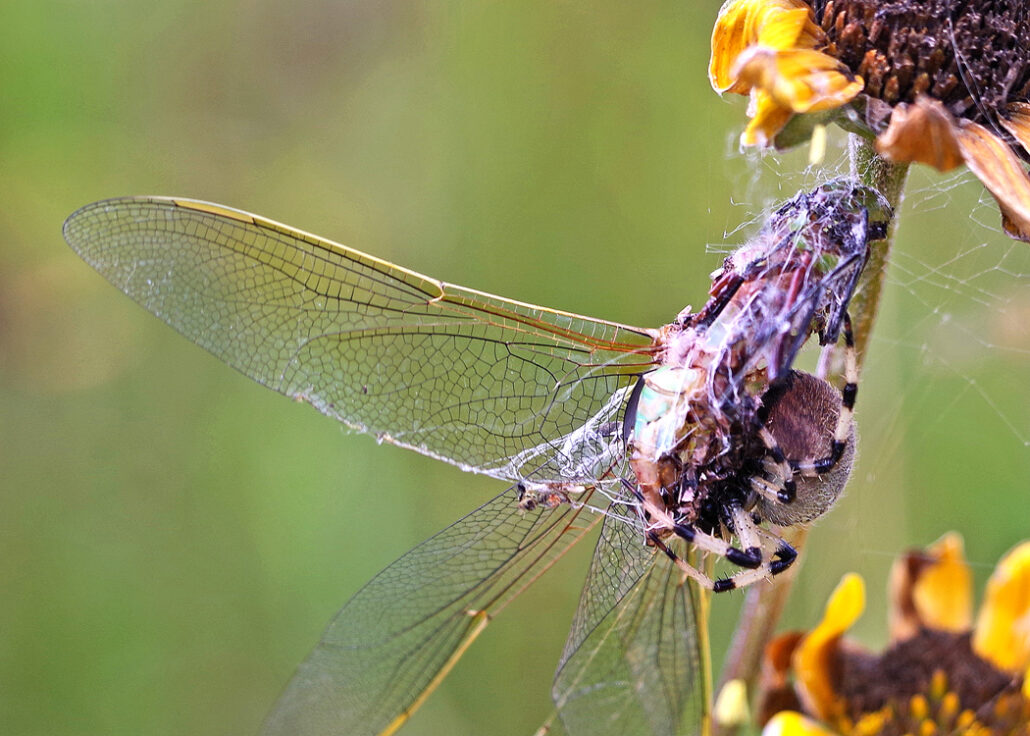
DARNER WITH SPIDER – well, the darner migration was nothing short of magical this year, and then it was over. And then it restarted – lots of Common Green Darners in the air on September 19 and 20, along with a bunch of Black Saddlebags. They’re heading south along the lakeshore, aiming for the Gulf States, but they don’t all make it. The BugLady’s guess is that this one was perched in the grass, and when it took off, it ran into the web of an orbweaver. It messed up the web, but because it wasn’t flying at full power, the spider was able to snag it. THANKS to the family that located this tableaux along the trail and pointed the BugLady at it.
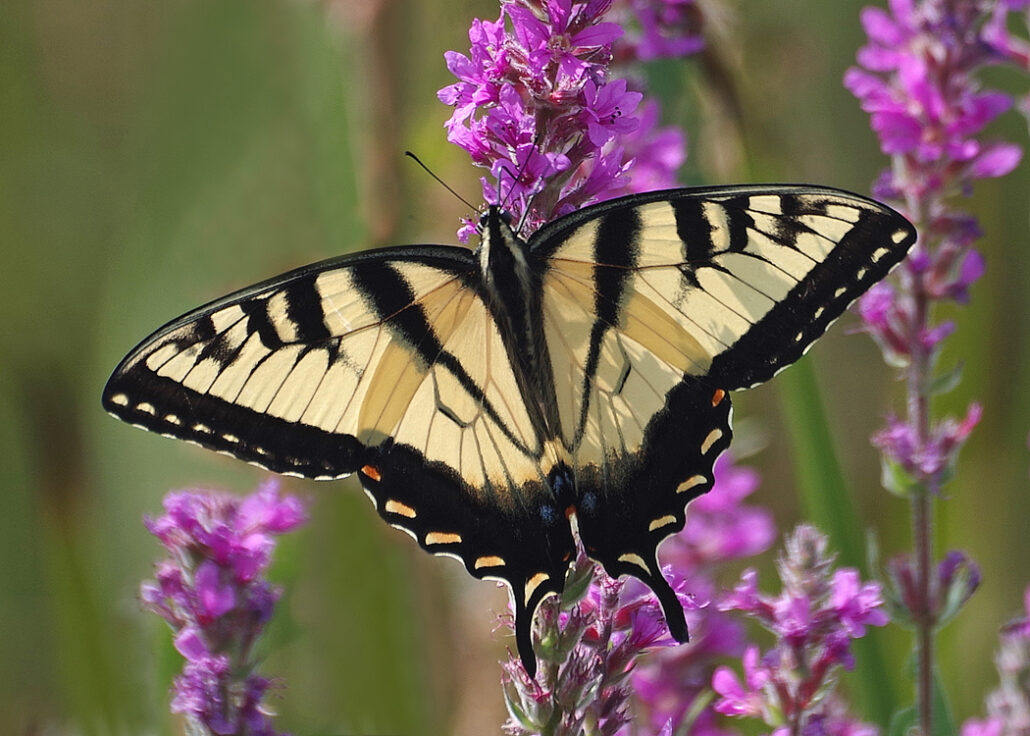
TIGER SWALLOWTAIL – perfection on the wing, but far too few of them this summer.
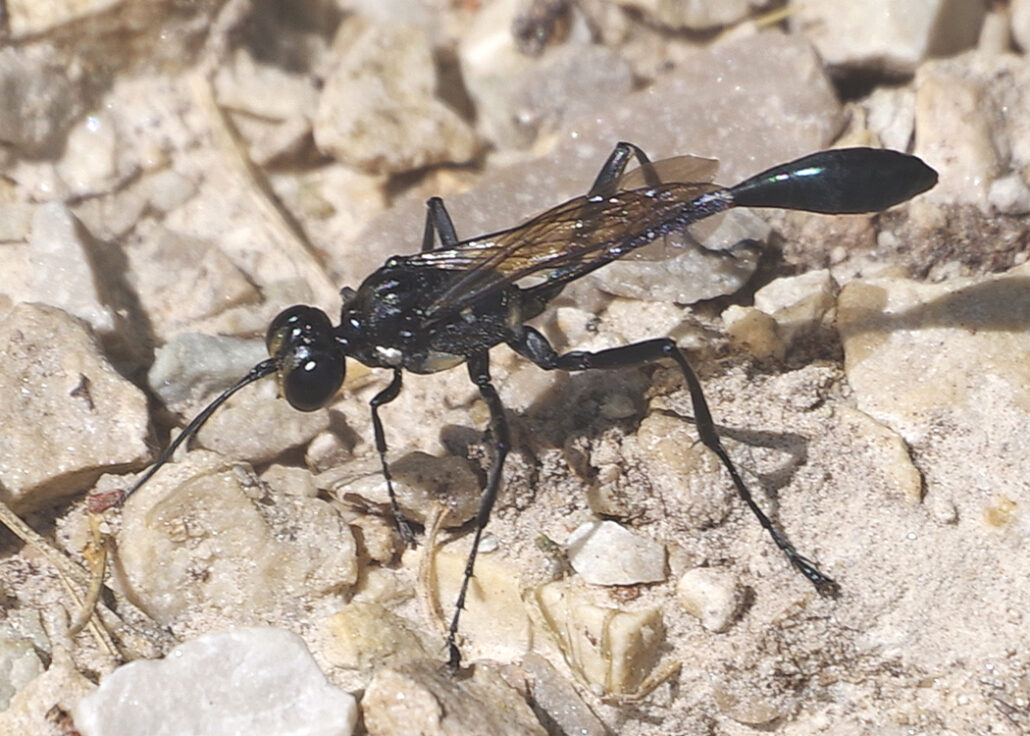
GOLD-MARKED THREAD-WAISTED WASPS (Eremnophila) put the “thread” in the Thread-waisted wasp family (Sphecidae). They’re solitary wasps that dig single-celled egg chambers in the ground and provision them with caterpillars of sphinx or owlet moths (and the odd of skipper butterfly caterpillar). Her long legs allow her to straddle a larger caterpillar and walk it back to her nest https://bugguide.net/node/view/1408944/bgimage. She keeps her strength up by sipping carb-rich flower nectar.
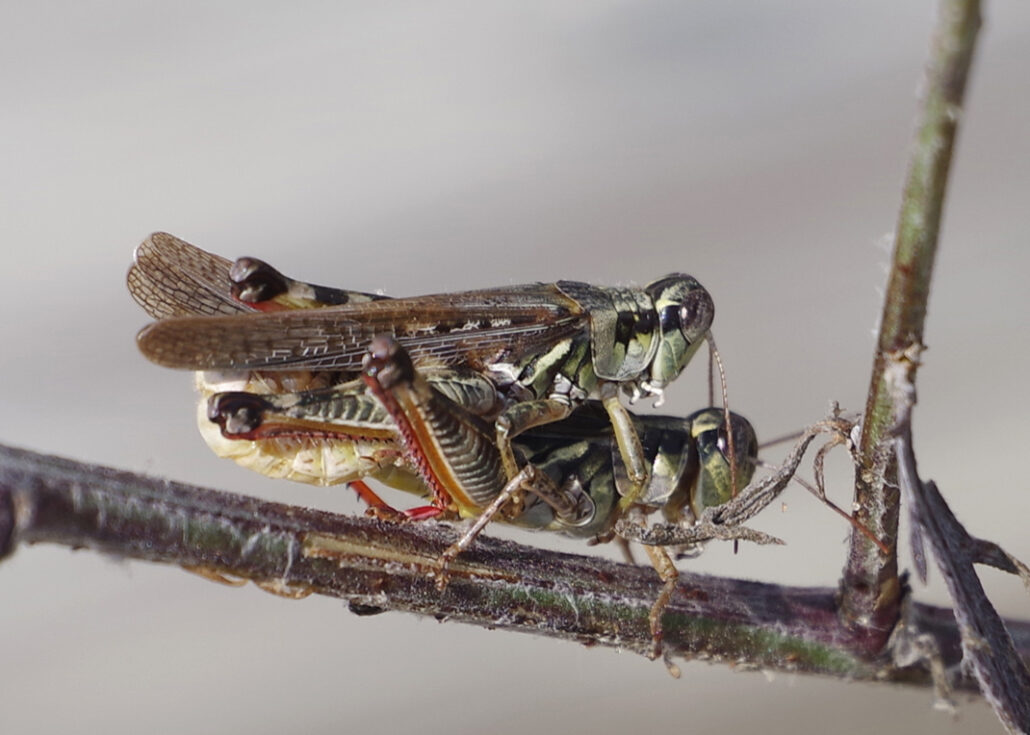
RED-LEGGED GRASSHOPPERS making more Red-legged grasshoppers. ‘Tis the season.
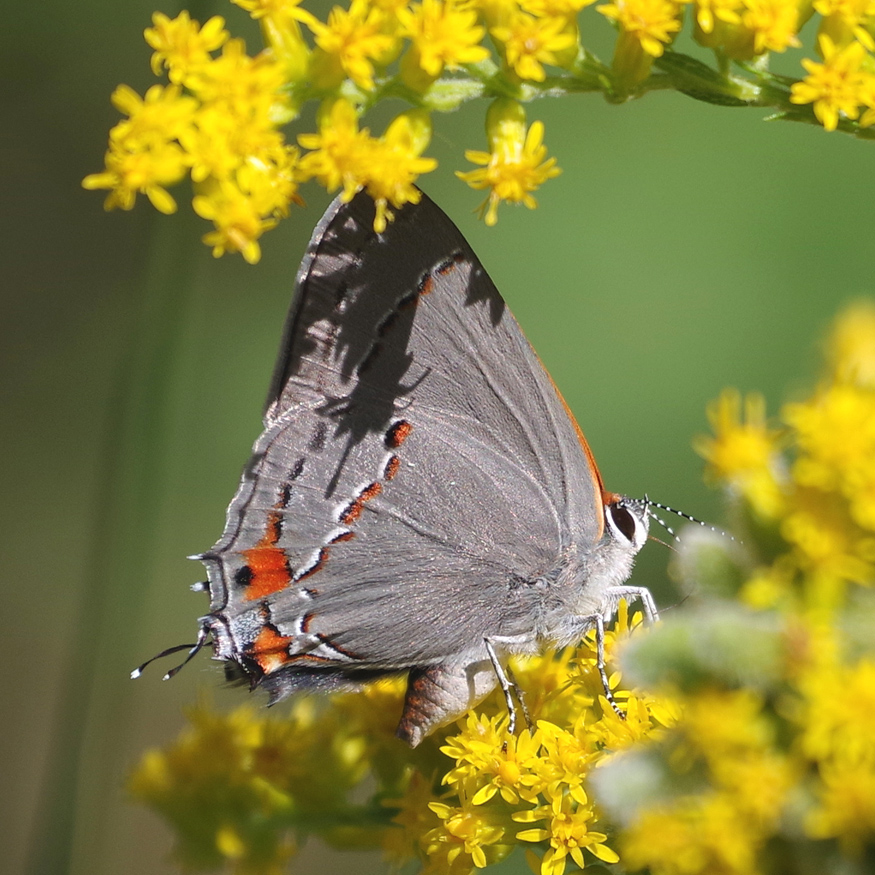
GRAY HAIRSTREAKS are listed as the most common hairstreak in North America (because their caterpillars are “catholic” eaters that feed on about 200 different plants), but they’re not common in Wisconsin.
Fun facts about Gray Hairstreaks:
- The point of the eyespot and the “tail” is to make the butterfly’s rear end look like a front end, with eye and “antenna,” thus confusing predators;
- Gray hairstreak caterpillars are tended by ants in return for honeydew (produced, of course, in the caterpillar’s “honey gland”);
- Both the caterpillar and the pupa produce sound.
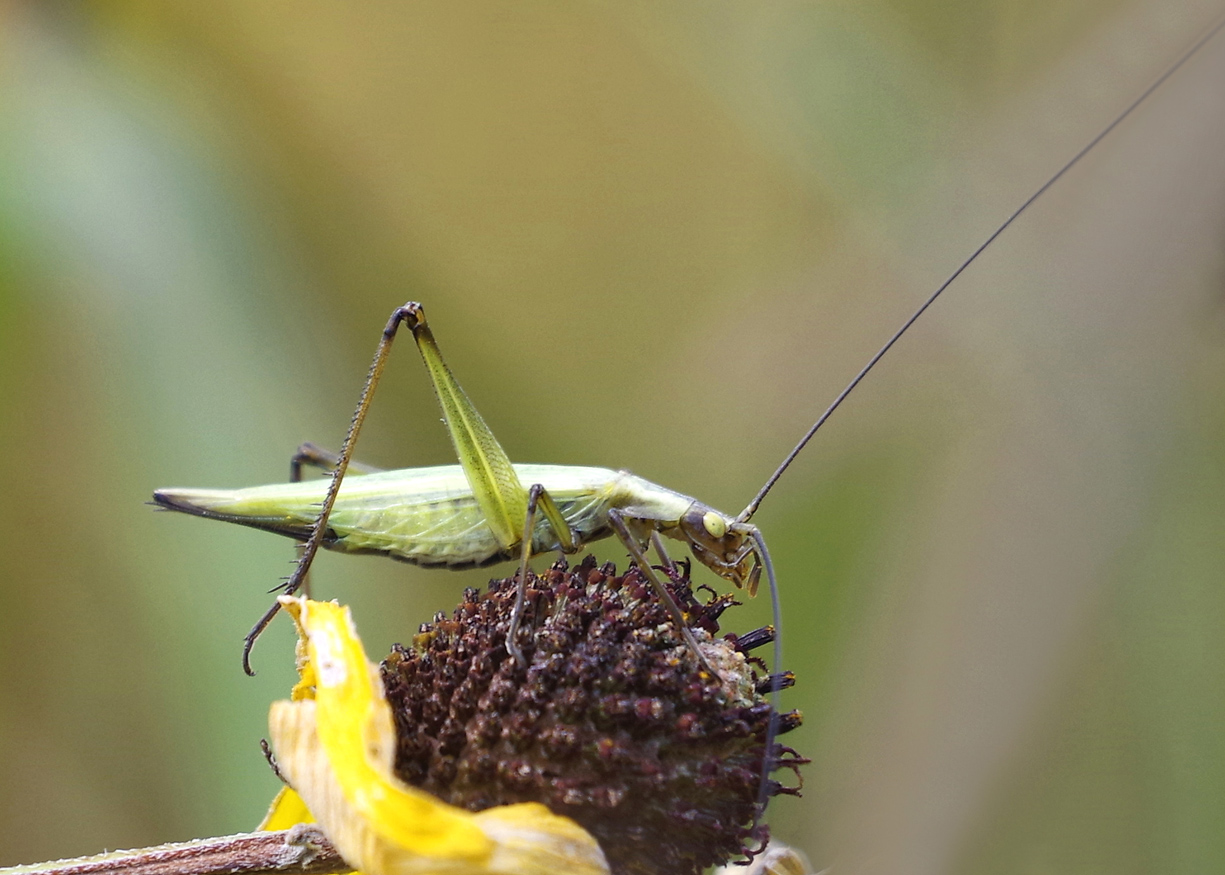
TREE CRICKET – the voice of the prairie in late summer and early fall. This one is (probably) in the Oecanthus nigricornis group, maybe the Forbes tree cricket https://www.listeningtoinsects.com/tree-cricket-introduction
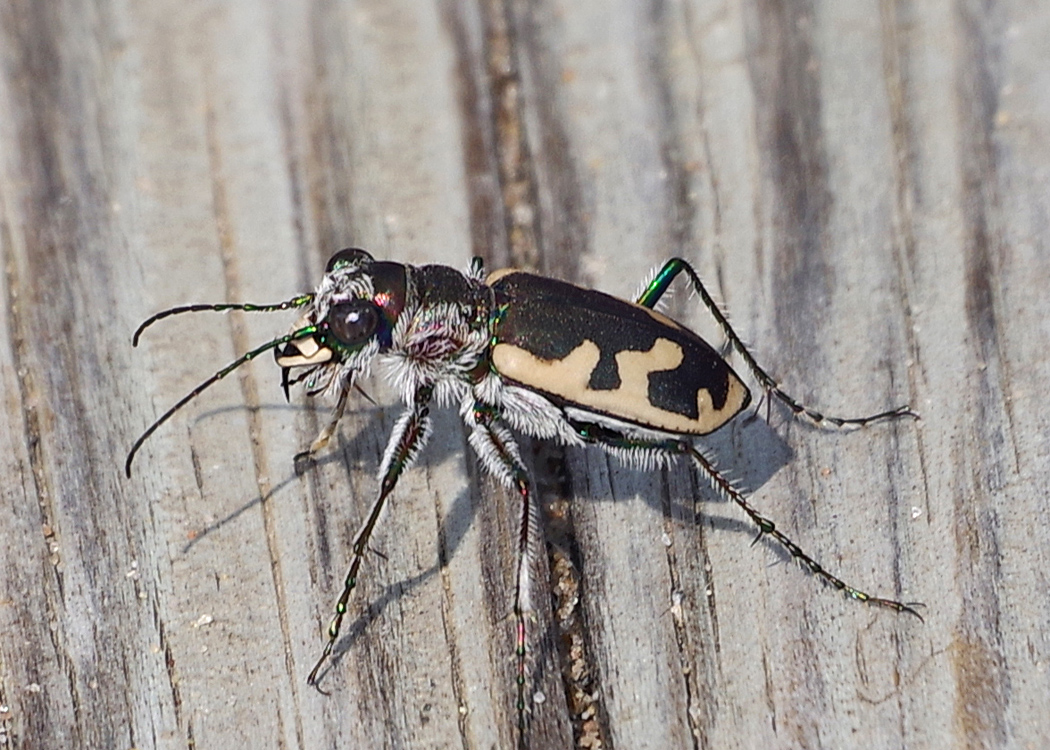
BIG SAND TIGER BEETLES are all about sand. Their eggs are buried in the sand; their larvae https://bugguide.net/node/view/1277687/bgimage dig long tunnels in the sand and then pop out when unwary insects and spiders wander by. At up to six feet long, the tunnel extends below the frost line and allows them to survive the winter. Adults stand “on tiptoe” (stilting) to raise themselves incrementally higher off the hot sand. Not surprisingly, Tiger beetles have fan clubs.

FIERY SKIPPER – these beautiful, inch-long, golden butterflies aren’t from around here, though they regularly visit God’s Country and beyond. Their usual range is southern and even tropical, and they move north in mid-summer and produce a brood here, but it’s too cold for them to overwinter (for now). They’ve made it to Hawaii and are unwelcome there, because their caterpillars feed on grasses.
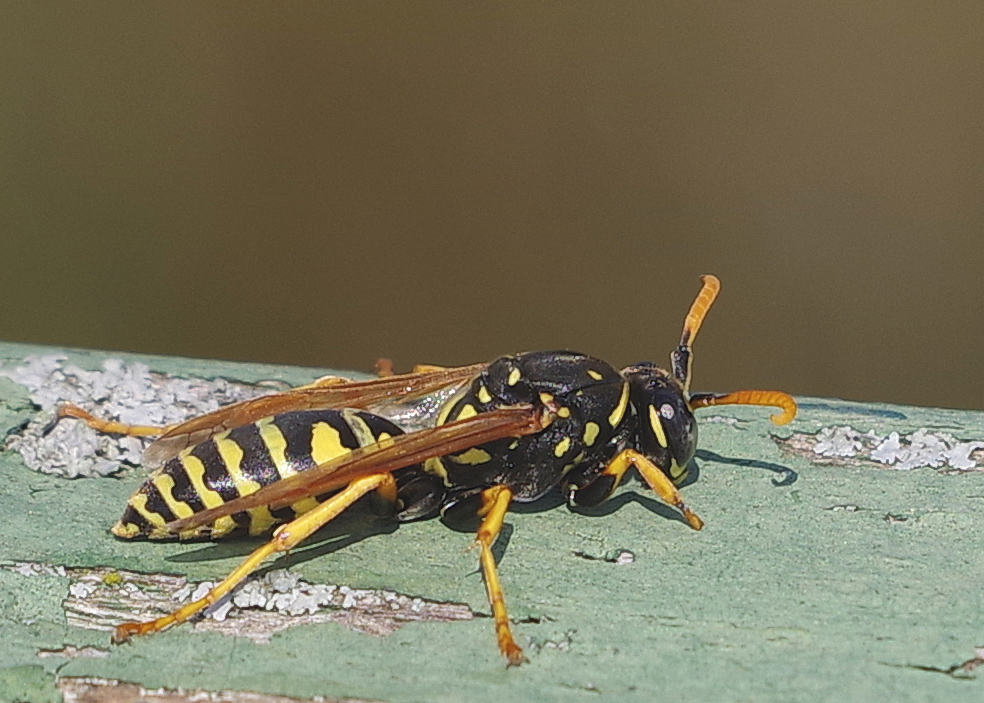
EUROPEAN PAPER WASPS are buzzing around the hawk tower these warm, sunny days, so the BugLady has to look sharp before she puts her hands on the railings. Fortunately, they are jumpy wasps that usually spot her before she gets too close. They arrived on the East Coast 40 or 50 years ago and have spread across the northern US and Canada. They catch, masticate, and regurgitate caterpillars and other small insects for their larvae. The lovely gold legs and antennae separate them from our common Northern paper wasp.
Fun facts about European paper wasps:
1) The brighter the coloration of a female European paper wasp, the more toxic her sting is;
2) Females with more spots on their faces are dominant.

FAMILIAR BLUETS – Big and startlingly blue, Familiar Bluets are one of the last damselflies on the scene. (‘Tis the season.)
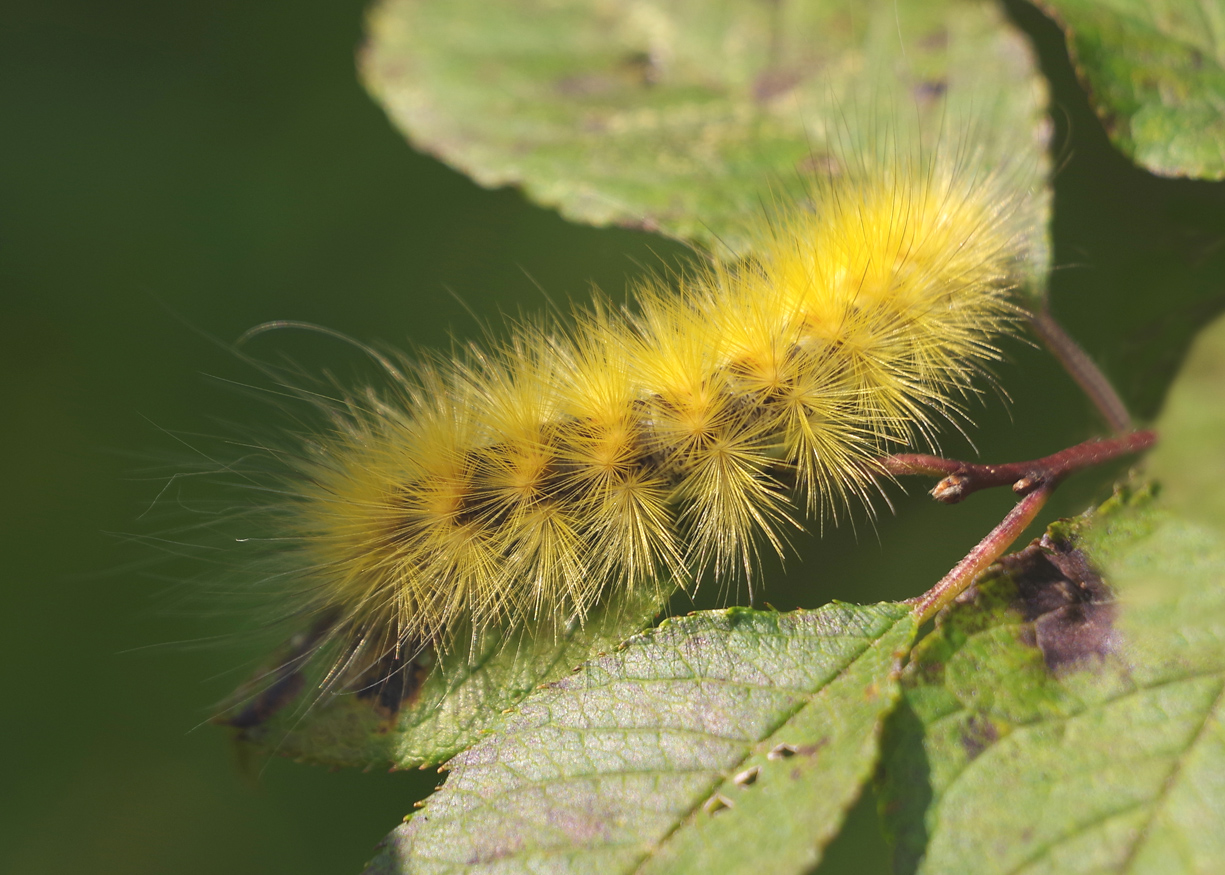
Caterpillars of VIRGINIAN TIGER MOTHS are also known as Yellow wooly bears or Yellow bear caterpillars (though they come in white, yellow, caramel, and rusty colors, and here’s a pink one https://bugguide.net/node/view/1728143/bgimage). They’re food generalists, and so are all over the place (not just in Virginia). Although some people are sensitive to their hairs, the hairs are not poisonous. Adults are spectacularly white https://bugguide.net/node/view/1984450/bgimage, but when they are alarmed, they curl their abdomen to flash a startling orange https://bugguide.net/node/view/2329153/bgimage.
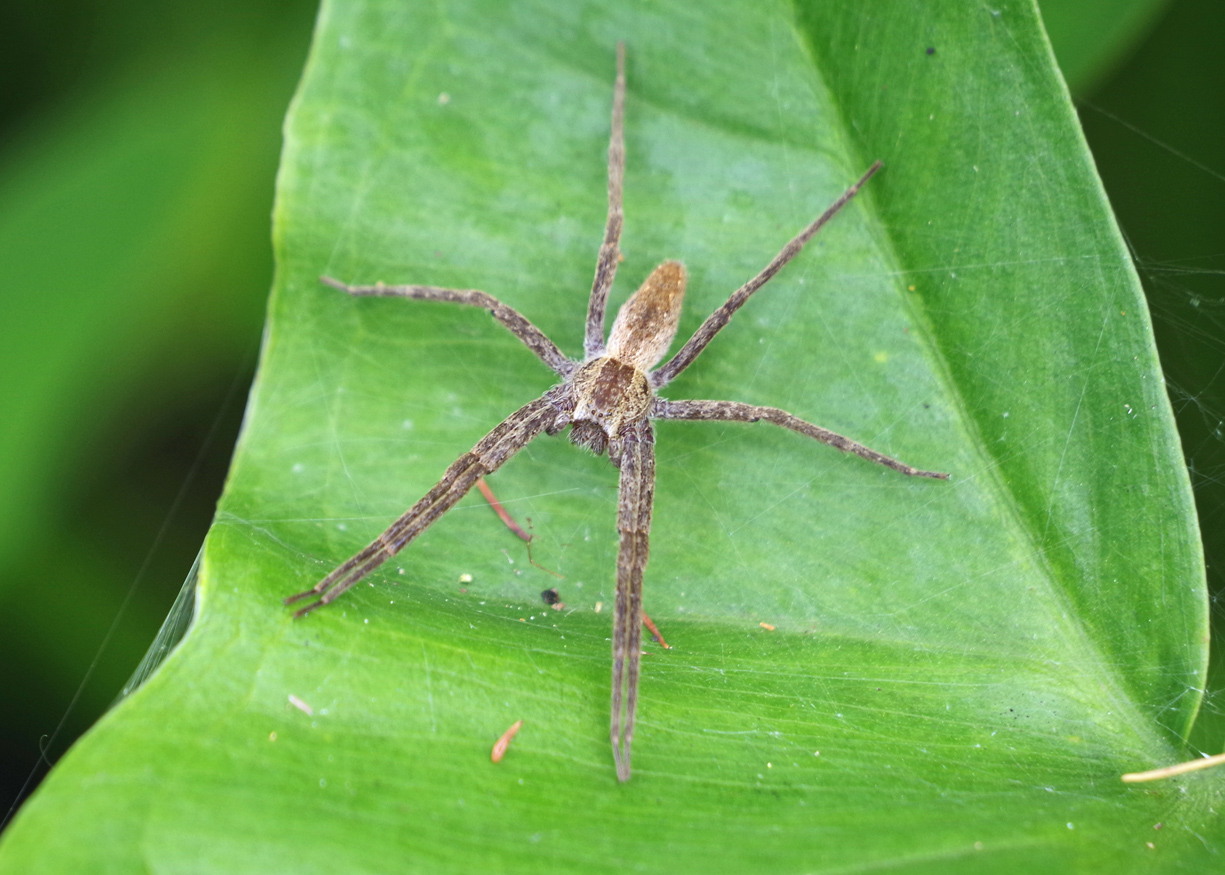
NURSERYWEB SPIDERS carry their egg sac around in their jaws (wolf spiders carry theirs aft) and when the eggs are close to hatching, she creates a loose “nursery web,” installs the egg sac in it (hers was on the underside of the leaf), and then guards it until the eggs hatch and the spiderlings have molted once. No help from Dad – if she doesn’t eat him (sexual cannibalism – an important nutrient booster) (he wraps her legs with silk during courtship to try to prevent this), he leaves to pursue other relationships. He gives her a “nuptial gift” of a silk-wrapped prey item at the start of courtship so that she will think well of him, but after he has immobilized her and exchanged bodily fluids, he takes the gift with him when he goes.
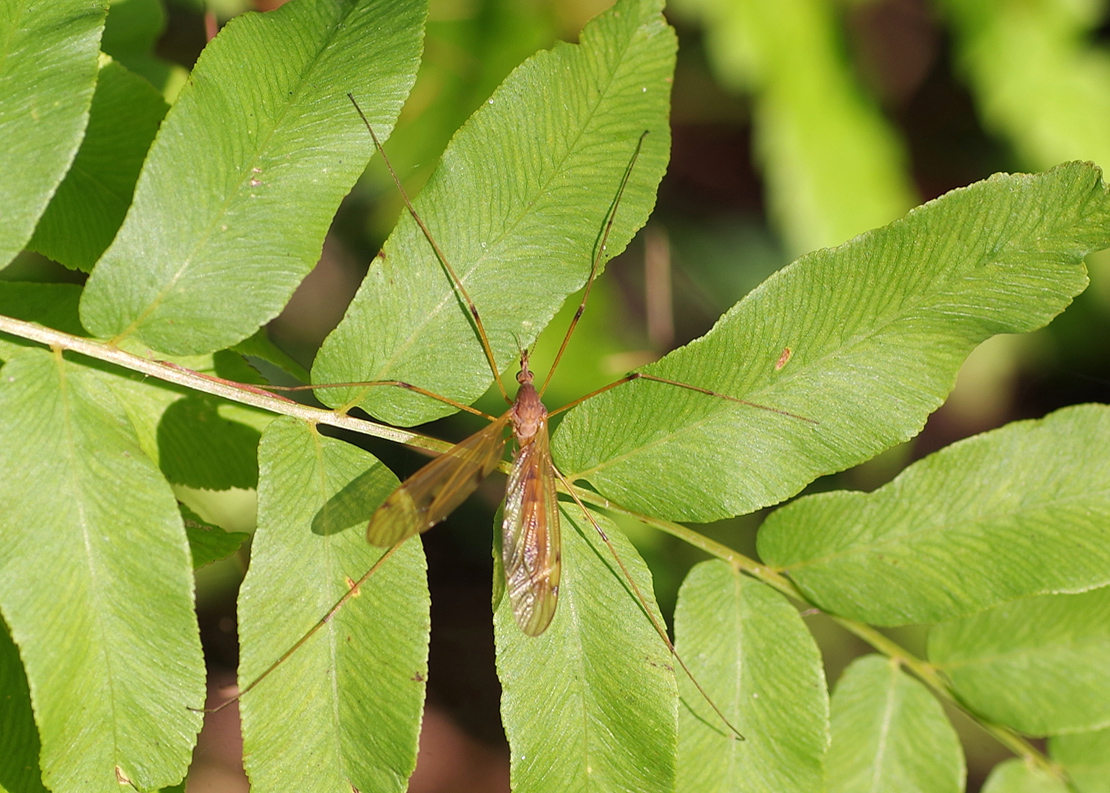
CRANE FLY – the “Old Wives” really got it wrong about Crane flies. Though they’re also called “mosquito hawks,” they do not eat mosquitos (or any meat of any kind). They do not bite anything at all, but they’re reputed to be the “most venomous insects in the world.” The confusion may have come because of their resemblance to the cellar spiders, themselves getting a bad rap because their bites are practically harmless. They’re just a short-lived fly whose larvae inhabit a variety of habitats from wetlands to lawns (where they both feed on and fertilize the grass).
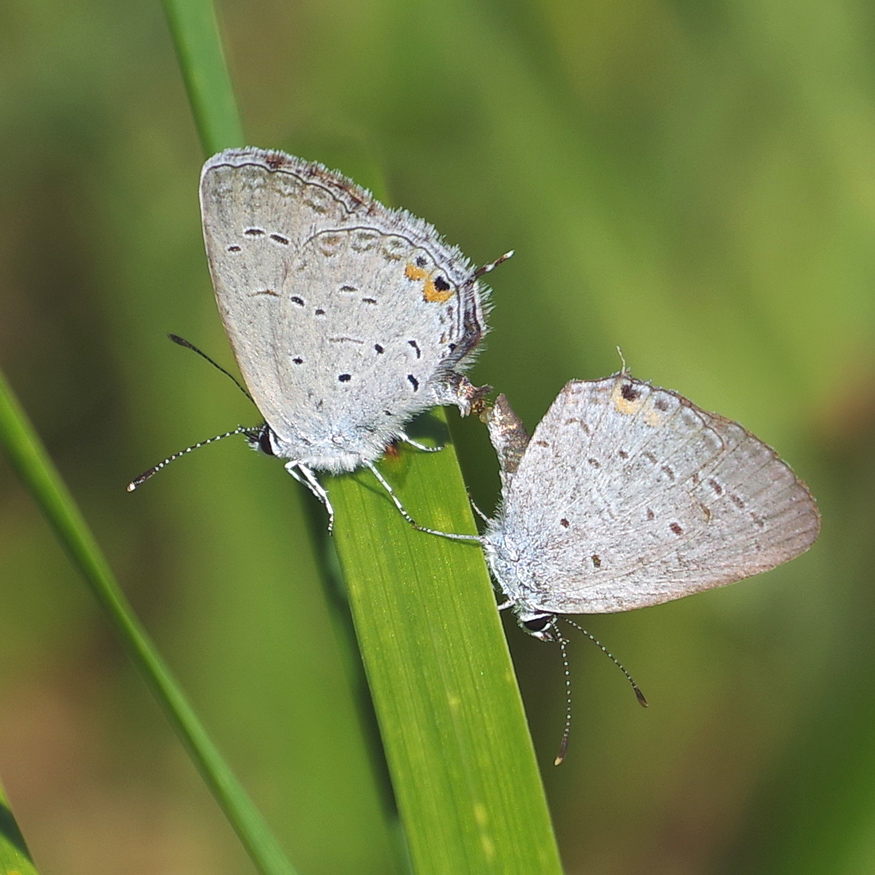
EASTERN TAILED-BLUES are tiny butterflies with wingspans of an inch or less, but they’re tough enough to fly well into fall (four years ago, the BugLady saw one on November 4). Like the Gray Hairstreak, the eye and tail on the hind wing are there to trick hungry birds into grabbing a wing, not an abdomen. ‘Tis the season.
Go outside – there are still bugs!
Kate Redmond, The BugLady
Bug of the Week archives:
http://uwm.edu/field-station/category/bug-of-the-week/
